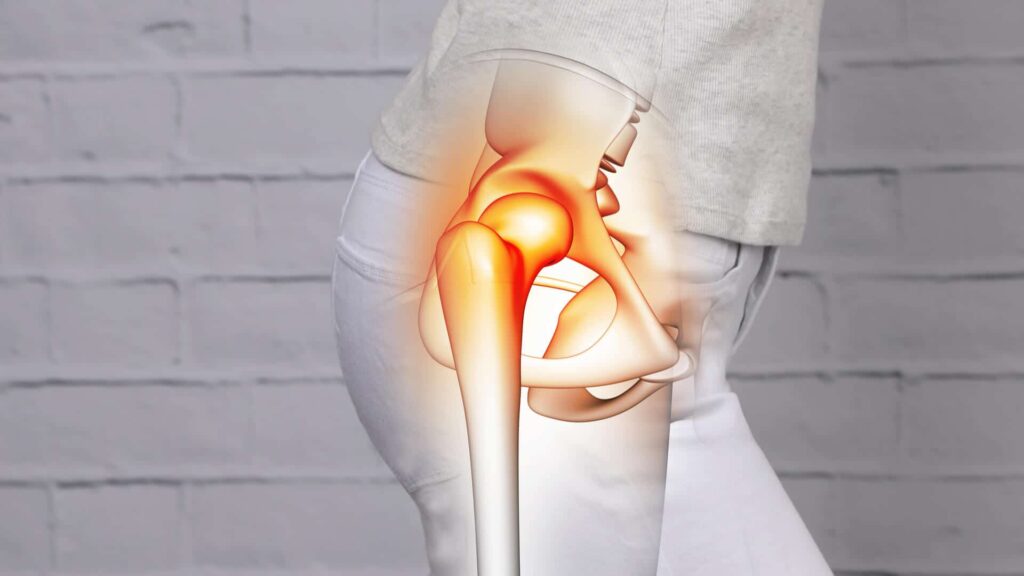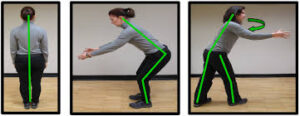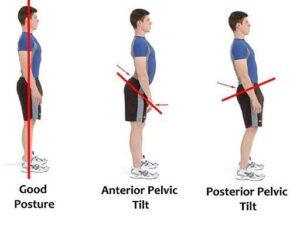

Ever found yourself craning your neck forward to check your phone, laptop, or even peer into the distance?
That is forward head carriage in action.
What starts as a seemingly harmless posture quirk can throw off your body’s mechanics, shifting your center of gravity and wreaking havoc on your hips.
Yes, your hips—those hardworking joints that bear your weight and keep you mobile—are deeply impacted by what is happening all the way up at your neck.
In this article, we will explore how forward head posture affects your body’s balance, why your hips end up taking the brunt of the stress, and what science has to say about this cascading effect.
Along the way, we would share real-life examples and break down complex concepts into bite-sized, relatable insights.
In This Article:
- What is Forward Head Carriage? A Quick Primer
- How Forward Head Carriage Alters Your Center of Gravity
- Why Hips Are Affected by Changes in Your Neck Alignment
- The Biomechanics of Forward Head Posture and Hip Joint Stress
- Real-Life Example: Sarah’s Posture Journey
- Scientific Studies Supporting the Link Between Neck Posture and Hip Alignment
- The Long-Term Effects of Forward Head Carriage on Your Hips
- Conclusion: Understanding the Neck-Hip Connection
What is Forward Head Carriage? A Quick Primer
Forward head carriage, also known as forward head posture, occurs when your head juts out in front of your shoulders instead of sitting squarely above them.
Ideally, your head should align directly over your spine, supported by your neck and shoulders.
But when this balance is disrupted—often thanks to long hours of screen time or poor posture—your head shifts forward, placing excessive strain on your neck and shoulders.
Here is where it gets interesting: your head weighs about 10-12 pounds.
For every inch it leans forward, the strain on your spine and supporting muscles increases by roughly 10 pounds.
Now imagine what that does to your body’s overall balance and alignment, especially to areas like your hips.
How Forward Head Carriage Alters Your Center of Gravity
Your center of gravity is like the body’s “balance hub.”
It is the point where your weight is evenly distributed so you can stand, walk, and move with stability.
Normally, your center of gravity aligns neatly over your feet.
But when your head moves forward, your body compensates to keep you upright.
The Chain Reaction
- Upper Back Compensation: To counteract the forward pull of your head, your upper back rounds, and your shoulders hunch.
- Lower Back Arch: The lumbar spine compensates by curving inward, causing an exaggerated arch.
- Pelvic Tilt: The pelvis tilts forward, creating additional stress on the hip joints.
This compensation shifts your center of gravity forward, making your hips work harder to stabilize your body.
Why Hips Are Affected by Changes in Your Neck Alignment?
Your hips are the unsung heroes of posture, constantly adjusting to balance the weight of your upper body.
When forward head posture shifts your center of gravity, your hips compensate for the imbalance, often leading to discomfort and misalignment.
Here is how it affects your hips:
Increased Joint Load – The forward shift in posture places excessive stress on the hip joints, accelerating wear and tear. As per Nova Headache Institute, poor posture increases pressure on the hips and may contribute to early degenerative changes.
Tight Hip Flexors – To stabilize the pelvis, hip flexor muscles like the iliopsoas tighten, reducing mobility. Physio-Pedia explains that prolonged sitting worsens this issue, leading to an anterior pelvic tilt and restricted movement.
Gluteal Muscle Weakness – Misalignment of the pelvis can weaken the gluteal muscles, which are crucial for hip stability. According to Smart Sports Medicine, weak glutes result in an unstable lower body and contribute to postural issues.
Anterior Pelvic Tilt – Forward head posture often causes the pelvis to tilt forward, increasing the curve in the lower back. Healthline notes that this condition is commonly associated with tight hip flexors and weak glutes, which put additional strain on the lumbar spine.
Lower Crossed Syndrome (LCS) – This condition involves tight hip flexors and lumbar muscles, combined with weak glutes and abdominals. Smart Sports Medicine highlights that LCS leads to chronic back pain and movement inefficiencies.
Impact on Gait and Balance – Postural imbalances caused by forward head posture can disrupt walking patterns and increase fall risk. A study published by the National Library of Medicine found that compromised hip function directly affects overall stability.
Addressing forward head posture through targeted stretching (such as shoulder stretching), strength training (such as shrugs), and proper ergonomics can help restore balance, reduce discomfort, and improve hip function.
The Biomechanics of Forward Head Posture and Hip Joint Stress:
Your body functions as a kinetic chain, where each segment influences the next. Forward head posture (FHP) disrupts this chain, leading to a cascade of compensations:
Head Misalignment: The forward positioning of the head shifts the center of gravity anteriorly.
Spinal Compensation: To counterbalance, the spine increases its lumbar curvature, a condition known as hyperlordosis.
Pelvic Shift: This spinal adjustment prompts an anterior tilt of the pelvis, placing additional stress on the hip joints and surrounding musculature.
A study published in Gait & Posture (2021) found that individuals with FHP exhibited altered hip kinematics during walking, leading to uneven hip joint loading and an increased risk of musculoskeletal pain.
Moreover, FHP can lead to tightness in the hip flexors and weakness in the gluteal muscles, further exacerbating postural imbalances. People with forward head posture experience tightness in their calf muscles.
This muscular imbalance contributes to inefficient movement patterns and may increase the likelihood of injury.
Addressing FHP through targeted exercises and ergonomic adjustments can help restore proper alignment, reduce undue stress on the musculoskeletal system, and improve overall functional movement.
Lucy’s Posture Journey
Lucy, a 35-year-old graphic designer, spent hours each day hunched over her laptop.
She noticed chronic neck stiffness and mild lower back pain but ignored it—until hip pain started affecting her daily runs.
A physical therapist explained that her forward head carriage was causing her pelvis to tilt forward, straining her hip joints.
Through targeted exercises to correct her posture, Lucy not only relieved her hip pain but also improved her overall alignment.
Scientific Studies Supporting the Link Between Neck Posture and Hip Alignment
Science confirms what Sarah experienced.
Here are some key studies:
- “The Effects of Forward Head Posture on Spinal and Pelvic Alignment” (Journal of Physical Therapy Science, 2019): This study demonstrated that forward head posture increases lumbar lordosis and anterior pelvic tilt, directly impacting hip joint alignment.
- “Kinetic Chain Disruption in Forward Head Posture” (Gait & Posture, 2021): Researchers found that individuals with poor neck posture showed altered hip movement patterns and increased stress on hip joints during walking.
- “Muscle Imbalances Linked to Forward Head Posture” (Clinical Biomechanics, 2020): This research highlighted how prolonged forward head posture weakens gluteal muscles and tightens hip flexors, leading to pelvic instability.
The Long-Term Effects of Forward Head Carriage on Your Hips
Ignoring forward head posture does not just affect your neck—it can lead to long-term issues in your hips, including:
- Hip Pain: Chronic stress on the hip joints can cause pain and discomfort, especially during movement.
- Reduced Mobility: Tight hip flexors and weak glutes limit hip flexibility and range of motion.
- Joint Degeneration: Over time, the increased load on the hips accelerates wear and tear, potentially leading to arthritis.
- Postural Imbalances: Misaligned hips can create compensatory patterns, affecting the knees and lower back.
According to a study in Spine Journal (2020), individuals with forward head posture are 40% more likely to develop hip-related musculoskeletal issues over time compared to those with proper alignment.
Understanding the Neck-Hip Connection
Forward neck syndrome might seem like a minor neck issue, but it causes a full-body ripple effect—especially in your thighs.
When your head consistently juts forward (thank you, smartphones), your spine shifts out of its natural alignment.
This change travels downward, tilting the pelvis forward—a condition known as anterior pelvic tilt.
The result?
Tight hip flexors and quadriceps, overstretched hamstrings, and underactive glutes. It is like throwing off a well-balanced pulley system; your thighs start doing work they were never meant to handle.
This imbalance can make everyday activities—walking, running, even standing—feel awkward or tiring.
Runners may notice shorter strides and more frequent hamstring strains. Office workers might experience thigh tightness despite barely leaving their chairs. The culprit is not your legs—it’s your neck.
So, what’s the fix?
As per BestForwardHeadPostureFix, “Focus on restoring alignment. Add daily hip flexor stretches, glute bridges, and pelvic tilt correction exercises to your routine. Strengthen your posterior chain while relaxing the muscles that are doing too much”.
And of course, lift your screen to eye level and take breaks from hunching over. Proper posture is not just about looking taller—it is about unleashing your body’s full, balanced potential.
Fix your neck, and your thighs might just thank you with every step.
References:

